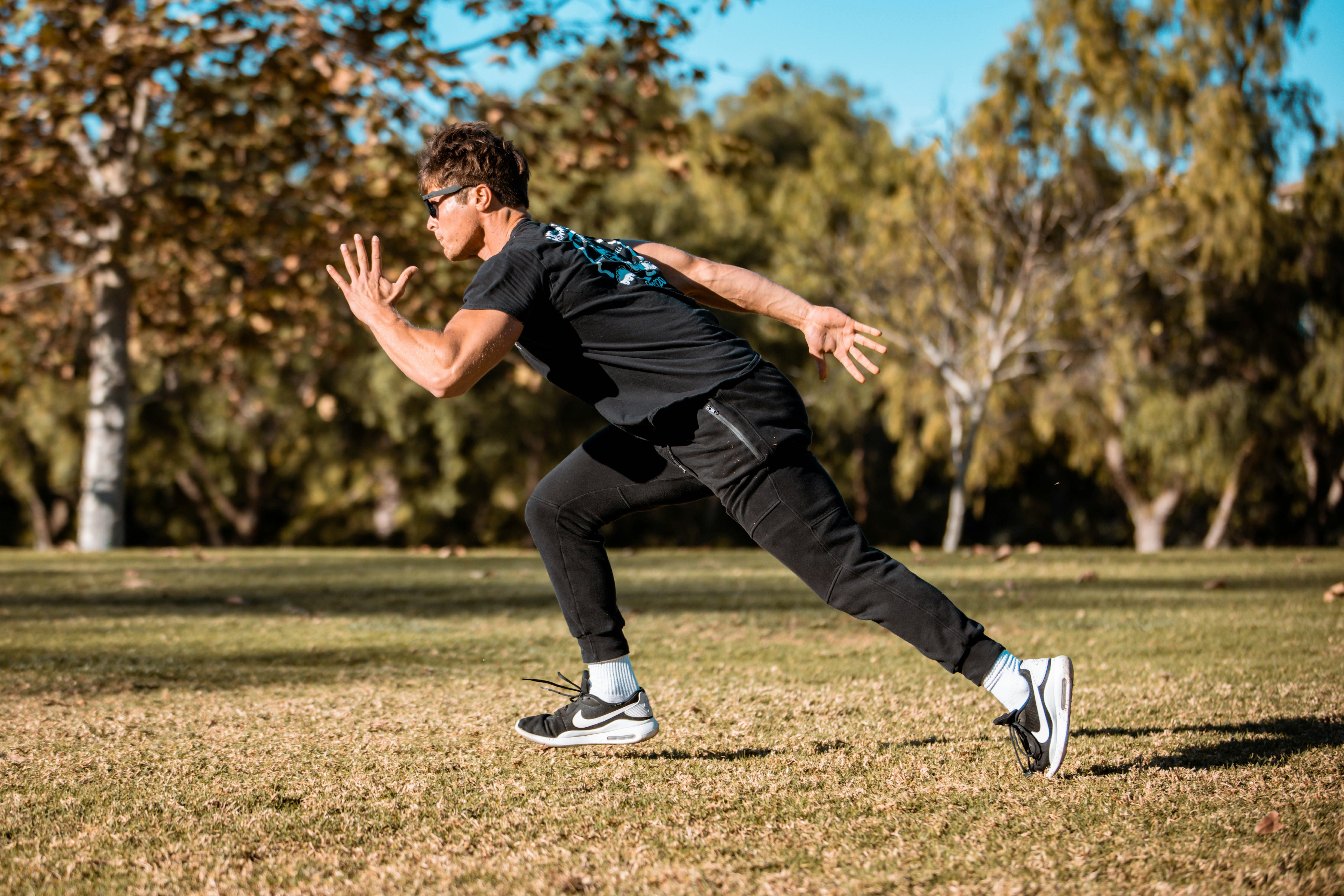Some important takeaways:
- Sprinting is one of the most efficient ways to get fit quickly. It’s particularly effective at burning fat, helping reduce your risk for conditions like heart disease and diabetes.
- Sprinting boosts your health and is a quick way to major fitness gains, but to reduce your chances of injury, it’s important to ease your way in.
- A well-rounded approach to exercise is the most effective and sustainable way to boost your fitness.
Sprinting improves fast-twitch muscle fibers, which help us do things like move quickly, lift heavy things, and jump.
When it’s time to buckle down and get fit, hitting the gym to lift weights may be your go-to. But what about adding some sprinting to the mix? A study from 2014 shows that a single bout of sprint interval training (SIT) may be related to significant fat loss, and just a few sessions of sprinting improves both anaerobic and aerobic performance.
Running at max speed (or maybe just close to it) is not only a time-efficient way to exercise but may also reduce your risk for developing certain health conditions.
Let’s dive into the benefits of this short but sweet exercise that really delivers.
Finding motivation: Why should I sprint?
We get it — when your life is busy and you’re not exactly bursting with energy, sprinting may not sound so appealing.
You might also be worried about injuring yourself, which is fair. It’s true that putting too much stress on your body all at once can be a one-way ticket to injury, but you can say the same of any sport, even weightlifting. You can absolutely work sprinting into your fitness regimen in a way that reduces your risk of injury. Plus, adding sprinting to your fitness routine may even help you get stronger and prevent you from injuring yourself down the line.
Sprinting improves fast-twitch muscle fibers
Fast-twitch muscle fibers are muscles responsible for short and powerful movements. Athletes like sprinters and powerlifters all make good use of these muscle fibers, but just because you’re not an elite athlete doesn’t mean you should coast through life without training yours.
Fast-twitch muscles help us do things like move quickly, lift heavy things, and jump, which are all pretty important in your workouts and everyday life.
Sprinting engages big muscle groups
Muscle mass tends to decline as you get older, but keeping your muscles active can help minimize that loss. One way sprinting helps is by engaging several large muscle groups, like the hamstrings, quadriceps, and calves. When you’re sprinting, these muscles work together to propel your body forward and increase speed.
Sprinting helps reduce body fat
Having more body fat is associated with conditions like heart disease and diabetes. But sprinting may help prevent that. In one study, researchers observed that people burned more fat after just four weeks of sprint training. Another perk is that sprinting can be very time effective. In the study, one group of people did sprint interval training for 10 minutes a week, while another group of people did 4.5 hours of endurance training per week, yet both groups experienced similar rates of fat-burning.
Sprinting keeps your bones strong
Adding sprinting into your workout routine enhances bone health and improves bone mineral density. Sprinting promotes bone health in a few ways, including strengthening the muscles supporting your bones and increasing the mechanical load on your bones, which could increase bone density. The mechanical stress of sprinting also helps stimulate the release of testosterone and other hormones that strengthen your bones.
How can I get started?
Listen up, because this is really important. To avoid hurting yourself, start slow. No matter how intense or committed you may be, you don’t want to go from 0 to 100 with any new exercise, including sprinting.
Consider dynamic stretching, which can help you slowly warm up your muscles through gentle repetitive motions that promote circulation and muscle lengthening.
When you’re on a jog, try speeding up for 30-second intervals and slowing back down to your regular pace.
You can also try running at a slight incline, to prepare your leg muscles for the burst of speed needed during sprinting.
Dr. Cam’s Health Hack
Sprinting is an amazing workout, but a well-rounded approach to exercise is the most effective and sustainable way to boost your fitness. Here’s what Dr. Cam recommends if you want to get fit quickly:
“Low intensity: Walk 1,000 steps 8x/ day, as breaks between work meetings
Medium intensity: Strength train 3-5 times a week. 12-20+ sets to near failure/ body part/ week.
High intensity: Sprint/sport once a week at 80% of max speed to prevent injury.”
Disclaimer: The contents of this article, including, but not limited to, text, graphics, images, and other information, is for information purposes only and does not constitute medical advice. The information contained herein is not a substitute for and should never be relied upon for professional medical advice. The content is not meant to be complete or exhaustive or to be applicable to any specific individual's medical condition. You should consult a licensed healthcare professional before starting any health protocol and seek the advice of your physician or other medical professional if you have questions or concerns about a medical condition. Always talk to your doctor about the risks and benefits of any treatment. Never disregard or delay seeking professional medical advice or treatment because of something you have read on this site. Maximus does not recommend, endorse, or make any representation about the efficacy, appropriateness, or suitability of any specific test, products, procedures, treatments, services, opinions, healthcare providers or other information contained herein. Maximus is not responsible for, nor will they bear any liability for, the content provided herein or any actions or outcomes resulting from or related to its use.





